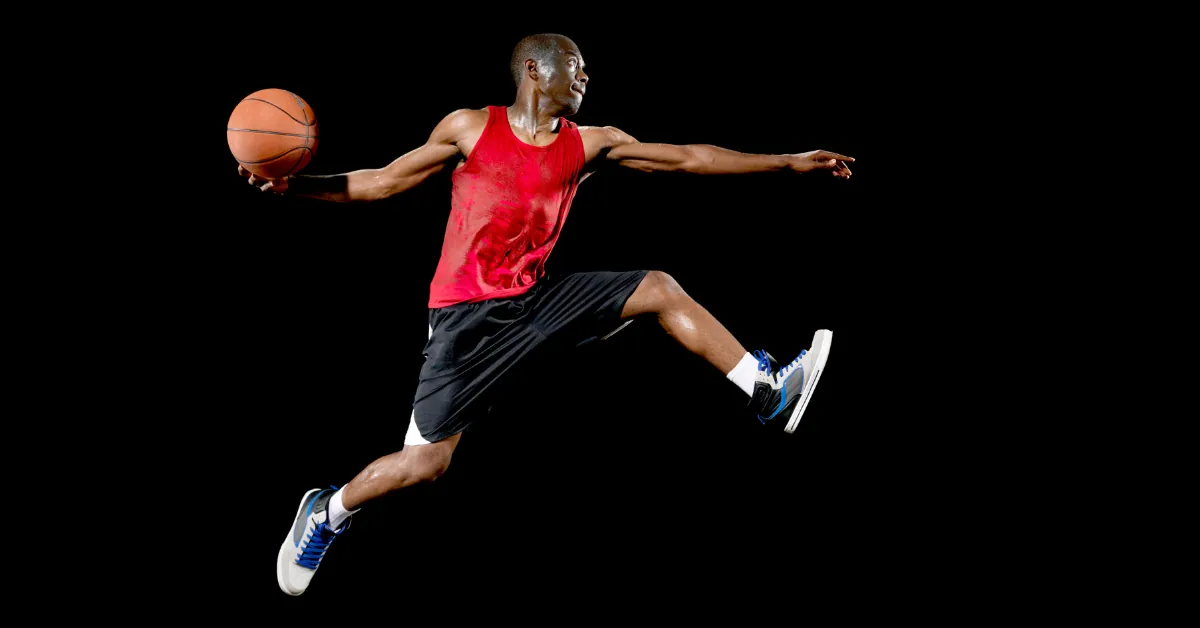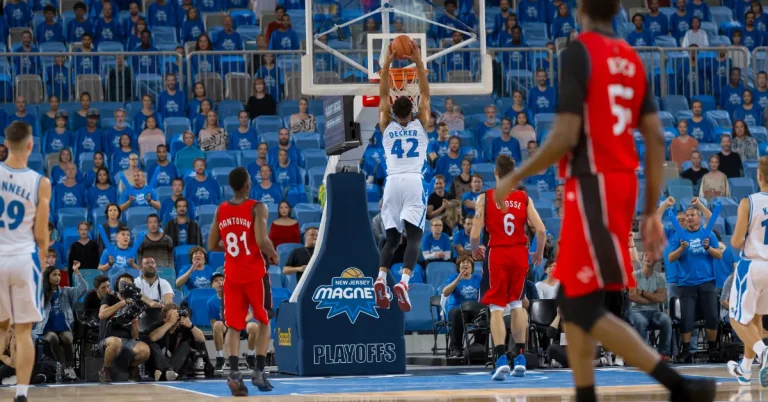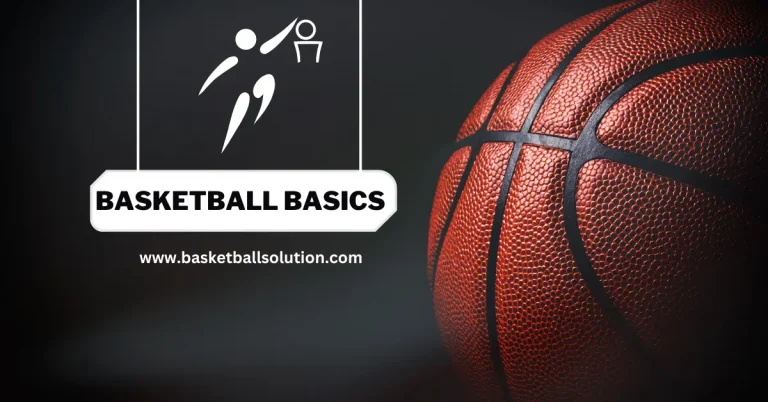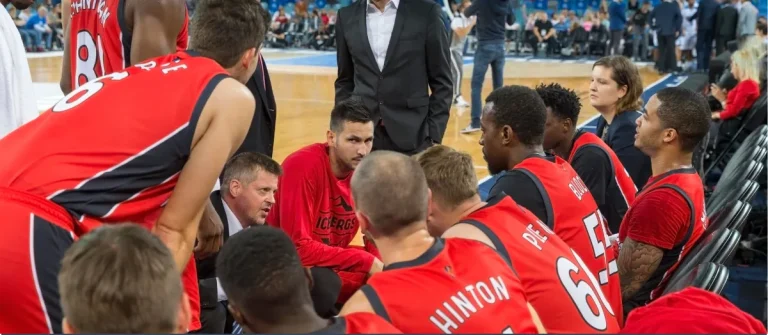How to Increase Vertical Jump of NBA Players?
Are you an aspiring NBA player looking to take your game to new heights? One crucial aspect of basketball that can make a significant difference on the court is your vertical jump. In this comprehensive guide, we’ll explore proven strategies and exercises designed specifically to help NBA players enhance their vertical leap and elevate their performance on the hardwood.
9 Exercises to Improve your Vertical Jump
Improving your vertical jump is essential for enhancing your performance in sports like basketball, volleyball, and track and field. Here are nine effective exercises to help you increase your vertical jump:
Squat Jumps
Squat jumps are a great way to build strong legs and improve how high you can jump. Start by standing with your feet about shoulder-width apart. Then, squat down like you’re sitting in a chair, making sure your knees are in line with your toes and your back is straight.
Next, push off the ground as hard as you can, jumping up into the air. Try to jump as high as possible while keeping your balance. When you land, bend your knees to absorb the impact, and then go right back into another squat. Do this exercise for 3 sets of 10 to 12 jumps, taking short breaks in between each set to rest.
Box Jumps
Box jumps are a type of exercise that works your leg muscles, like your quads, hamstrings, and glutes. To do them, stand in front of a sturdy box or platform with your feet apart. Bend your knees and swing your arms back to get ready.
Then, jump onto the box as high as you can, using your hips and knees to push yourself up. Land softly on top of the box with your knees bent to protect yourself. Step back down and do this 8 to 10 times for 3 sets. Make sure to jump explosively while also being careful not to hurt yourself.
Read more: Importance Of Knee Pads
Depth Jumps
Depth jumps are a challenging exercise that helps make your legs stronger and more explosive. Here’s how to do them: Start by standing on a box or platform that’s about knee height. Step off the box and land on both feet at the same time.
As soon as you land, jump up as high as you can. Try to spend as little time on the ground as possible. Do this 6 to 8 times for 3 sets, taking breaks in between. It’s important to rest enough so you can keep up the intensity and do each jump with good form.
Lunge Jumps
Lunge jumps are a great way to make your legs stronger, improve your balance, and coordinate your movements. Here’s how to do them: Start by standing with one foot in front of the other, like you are about to take a big step. Lower your body down into a lunge position, making sure both knees are bent at about a 90-degree angle and your upper body stays upright.
Next, jump up explosively, switching the positions of your legs while you’re in the air. When you land, do it softly and immediately go back into another lunge. Do this 10 to 12 times for 3 sets on each leg, switching legs each time you jump. Focus on doing each jump smoothly and with good control, and you can make it harder as you get better at it.
Read more: Triple Threat Position In Basketball
Single-Leg Hops
Single-leg hops are an effective exercise for improving balance, coordination, and explosive power in the lower body. Begin by balancing on one foot with the other foot lifted slightly off the ground. From this position, hop forward, backward, or sideways while maintaining balance on the single leg.
Focus on landing softly and controlling your movements to minimize impact on the joints. Complete 3 sets of 8–10 hops on each leg, alternating between legs for each set. Pay attention to proper form and stability throughout the exercise, and adjust the intensity as needed to challenge yourself.
Calf Raises
Calf raises target the calf muscles and are essential for developing strength and stability in the lower legs. To perform calf raises, stand with your feet hip-width apart near a wall or sturdy object for balance. Rise onto your toes as high as possible, lifting your heels off the ground while keeping your ankles straight.
Hold the top position briefly, then lower back down until your heels are just below the level of your toes. Perform 3 sets of 15-20 repetitions, gradually increasing the resistance as you progress by holding onto dumbbells or adding a weighted vest. Focus on controlled movements and maintaining proper alignment throughout the exercise to maximize its effectiveness.
Read more: How to Play Pickup Basketball Game?
Jump Squats with Resistance Bands
Jump squats with resistance bands are an excellent exercise for targeting the lower body muscles while also engaging the hip abductors and adductors. Start by placing a resistance band around your thighs, just above the knees. Stand with your feet shoulder-width apart and perform a squat, ensuring that your knees stay aligned with your toes and your back remains straight.
As you come up from the squat position, explosively jump upward while maintaining tension on the resistance band by pushing your knees outward. Land softly and immediately lower back into a squat position to complete one repetition. Aim for 3 sets of 10–12 repetitions, focusing on maintaining proper form and control throughout the exercise.
Medicine Ball Throws
Medicine ball throws are a dynamic exercise that targets multiple muscle groups, including the legs, core, shoulders, and arms. Begin by standing facing a wall with a medicine ball held at chest level. Lower into a quarter squat position, then explosively extend your hips and knees while simultaneously throwing the ball against the wall as high as possible.
Use the power generated from your lower body to propel the ball upward, engaging your core and upper body muscles. Catch the ball on the rebound and immediately repeat the movement for 3 sets of 8–10 repetitions. Focus on maintaining proper form and control throughout the exercise, and adjust the weight of the medicine ball as needed to challenge yourself.
Bounding
Bounding is a dynamic exercise that combines elements of running and jumping to improve explosive power and stride length. To perform bounding, start with a few jogging steps to build momentum. Then, explosively launch yourself into a series of long jumps, focusing on covering as much distance as possible with each jump while maintaining proper form.
Extend your arms forward to help propel yourself forward and maximize your distance. Land softly with each jump, absorbing the impact with bent knees to reduce stress on the joints. Immediately transition into the next jump to maintain the flow of movement. Aim to perform 3 sets of 6–8 repetitions, resting briefly between sets to allow for recovery. Focus on maintaining a smooth and fluid motion throughout the exercise, and gradually increase the intensity as you become more comfortable with the movement.
Other Factors that Affect the Vertical Jump
Improving your vertical jump goes beyond strength and power training. Body fat percentage affects jump performance, so maintaining a healthy weight is crucial. Flexibility and mobility play key roles too, as tight muscles limit the range of motion. Dynamic stretching and activities like yoga enhance flexibility.
Rest and recovery are essential for muscle repair and growth. Overtraining hampers progress, so proper nutrition, sleep, and rest days are important. By addressing these factors, alongside strength and power training, you can maximize your vertical jump and unleash your athletic potential.
Read more: Tips To Improve Basketball Shoe Grip
Understanding the Mechanics of a Vertical Jump In Basketball
To effectively increase your vertical jump, it’s important to understand the mechanics behind it. A vertical jump involves the coordinated effort of multiple muscles in the lower body, as well as the nervous system.
Muscles Involved in a Vertical Jump: One of the main muscle groups involved in a vertical jump is the leg muscles, specifically the quadriceps, hamstrings, glutes, and calves. These muscles work together to generate force and power to lift the body off the basketball court. Additionally, the core muscles, including the abs and lower back, help stabilize the body during the jump.
Role of the Nervous System in a Vertical Jump: The nervous system plays a critical role in a vertical jump as well. It sends signals from the brain to the muscles, allowing them to contract and generate force. The timing and coordination of these signals are crucial for achieving maximum power output during a jump.
Phases of a Vertical Jump: The vertical jump consists of several phases, including the eccentric phase, the amortization phase, and the concentric phase. During the eccentric phase, the muscles lengthen as they prepare for the jump. The amortization phase is the brief pause between the eccentric and concentric phases, where the body transitions from lowering to jumping. Finally, during the concentric phase, the muscles contract forcefully to generate vertical lift.
FAQs
What exercises can I do to increase my vertical jump?
Incorporate squats, lunges, and plyometrics into your training routine to increase your vertical jump. Squats and lunges are compound exercises that strengthen the lower body, while plyometrics enhance explosive power. Include jump training exercises like box jumps and jump squats to further enhance jump height.
How can I improve my lower body strength to jump higher?
To improve lower body strength for higher jumps, incorporate compound exercises like squats and lunges. Target specific muscles with calf raises and glute bridges to boost jump height. Gradually increase intensity and resistance to prevent injury and promote progress.
What role do flexibility and mobility play in improving vertical jump height?
Flexibility and mobility are crucial for a higher vertical jump. Tight muscles limit range of motion and hinder jumping ability. Incorporate dynamic stretching, leg swings, lunges with twists, and practices like yoga and Pilates for improved flexibility, mobility, and jumping.
Conclusion
Increasing your vertical jump for basketball requires a combination of strength and power training exercises, as well as attention to other factors like body composition, flexibility and mobility, and rest and recovery. Some people think playing basketball makes the players taller, which is totally beyond logic. Moreover, maintaining a healthy body weight and body fat percentage, improving flexibility and mobility through dynamic stretching, yoga, or Pilates, and allowing for adequate rest and recovery can further optimize your training for a higher vertical jump.

Passionate basketball player striving for excellence on and off the court. Dedicated to the game since youth, I have honed skills through years of practice. Explore my journey, gear reviews, and dunking tips. Let’s elevate our game together!






